"CAN I ASK YOU SOMETHING, KITTRIDGE?" ETHAN HUNT IN LONDON - MEANWHILE, A FAMILIAR FIGURE IS HIDING IN PLAIN SIGHT

 Hello and welcome to the unofficial Brian De Palma website. Here is the latest news: |
|---|
E-mail
Geoffsongs@aol.com
-------------
Recent Headlines
a la Mod:
Listen to
Donaggio's full score
for Domino online
De Palma/Lehman
rapport at work
in Snakes
De Palma/Lehman
next novel is Terry
De Palma developing
Catch And Kill,
"a horror movie
based on real things
that have happened
in the news"
Supercut video
of De Palma's films
edited by Carl Rodrigue
Washington Post
review of Keesey book
-------------
Exclusive Passion
Interviews:
Brian De Palma
Karoline Herfurth
Leila Rozario
------------
------------
| « | July 2024 | » | ||||
| S | M | T | W | T | F | S |
| 1 | 2 | 3 | 4 | 5 | 6 | |
| 7 | 8 | 9 | 10 | 11 | 12 | 13 |
| 14 | 15 | 16 | 17 | 18 | 19 | 20 |
| 21 | 22 | 23 | 24 | 25 | 26 | 27 |
| 28 | 29 | 30 | 31 | |||
De Palma interviewed
in Paris 2002
De Palma discusses
The Black Dahlia 2006

Enthusiasms...
Alfred Hitchcock
The Master Of Suspense
Sergio Leone
and the Infield
Fly Rule
The Filmmaker Who
Came In From The Cold
Jim Emerson on
Greetings & Hi, Mom!
Scarface: Make Way
For The Bad Guy
Deborah Shelton
Official Web Site
Welcome to the
Offices of Death Records







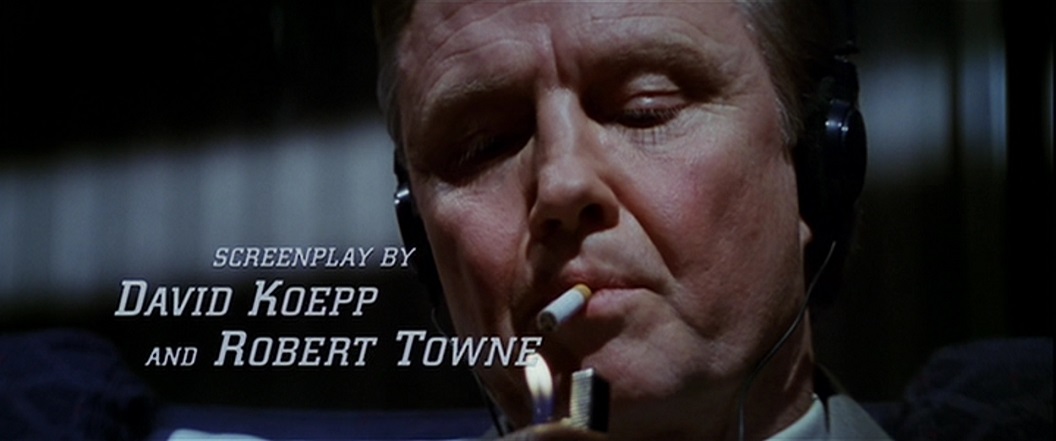
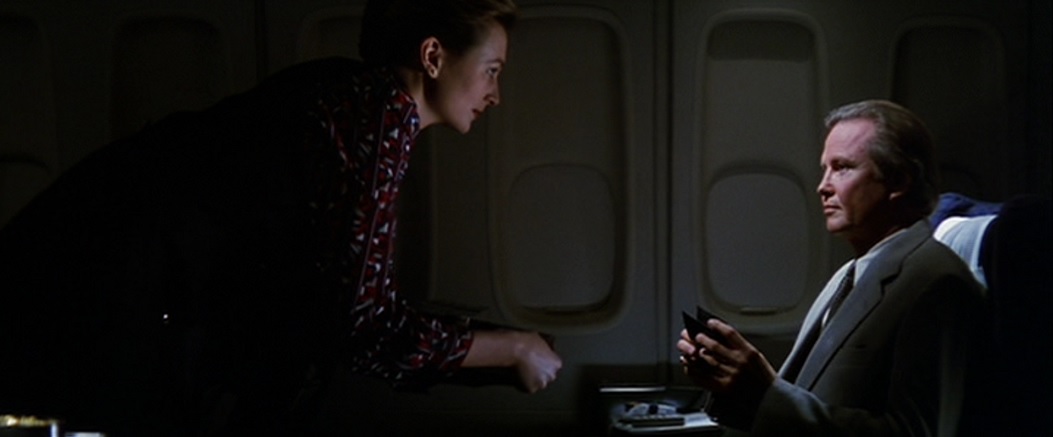
Ali: Are there any more recent movies that you found yourself really drawn to and revisiting? Modern classics.Austin: Modern classics? Uh… you know, I just actually watched all of the Mission: Impossibles on the plane. And it had been a while since I’d seen that first, Brian De Palma [nodding with a smile]
Ali: With the… helicopter…
Austin: Yeah… Yeah.
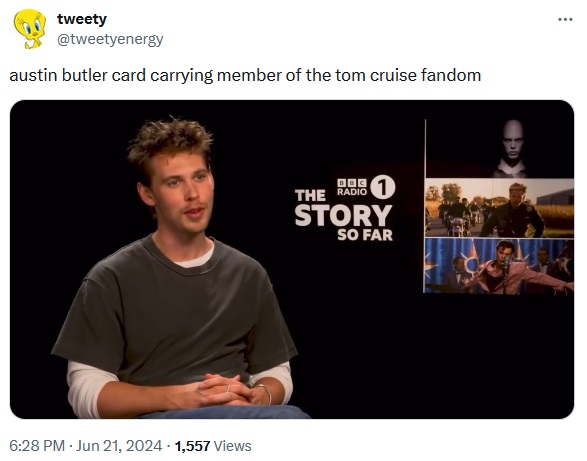
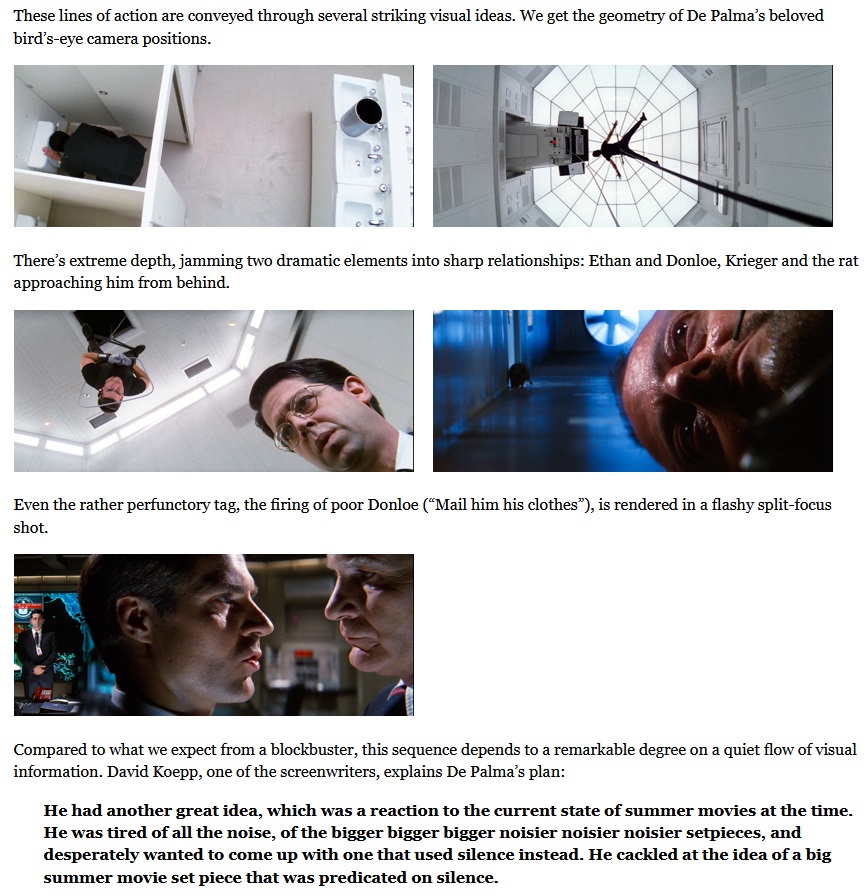
The result is nice case study in visual storytelling. It also indicates how even a pure instance needs non-visual elements to be understood.Top among those elements is genre. We know a heist situation when we see one, and that knowledge forms a kind of hollow form, a schema into which we slot the elements that generate suspense. What elements? There’s the need for silence and concealment. There’s Donloe, the oblivious analyst who comes in and out of the vault; he must be distracted, but he may still return at the wrong moment. There are unexpected obstacles—a suspicious guard, a curious rat, and a drop of sweat. There’s the risk of a telltale detail that may betray the invaders, such as Krieger’s dagger, dropped onto an arm rest. Over it all hovers a deadline, so that the heist becomes a race against time. (Not only is there a clock in the room, but a digital readout warns us of the rising temperature in the room, another potential giveaway.) Visual storytelling is enormously helped when we bring so much prior knowledge about the type of situation we confront.
“From here on in,” Ethan warns the team, “absolute silence.” For them, maybe, but not for us. The music continues a bit before subsiding for about ten minutes. Even then, the silence isn’t absolute. We hear the hum of the vault, the scratchy patter of the rat approaching Krieger in the ductwork, and the squeaking of the rope as Krieger pays it out and strains to keep Ethan poised above the floor.
Clearly, in his concern for visual storytelling De Palma isn’t ruling out noise and music. What he’s opposed to is talk. But there is talk, however discreet, here too. In M:I, I count about two dozen lines of dialogue once Krieger and Ethan get positioned above the vault. These chiefly involve Luther whispering information to Ethan about Donloe’s whereabouts. Granted, many of his lines are very terse (“He’s in the bathroom,” “Check,” “Good”). Still, dialogue serves as a good redundancy factor, accentuating the suspense of the situation and at one moment giving us access to Luther’s reaction, when he discovers that what Ethan has nabbed is the precious NOC list.
Just as important, our experience of the full suspense of the scene depends on talk we’ve heard earlier. Ethan has gathered his team on the train and is explaining how the security system at Langley works. Using a strategy that goes back to Lang’s M, M:I presents Ethan’s verbal walk-through of the procedures as a voice-over for footage of Donloe executing them. The sequence introduces us to Donloe, familiarizes us with the constraints of the heist, and maps out the normal going-and-coming rhythm that Donloe’s spasmodic upchucking will disrupt.
So the vault break-in can rely on relative silence partly because the situation has been given fully by Ethan’s verbiage. In a way, it’s the reverse order of the Rear Window tutorial: dialogue first, then images to give it dramatic impact.
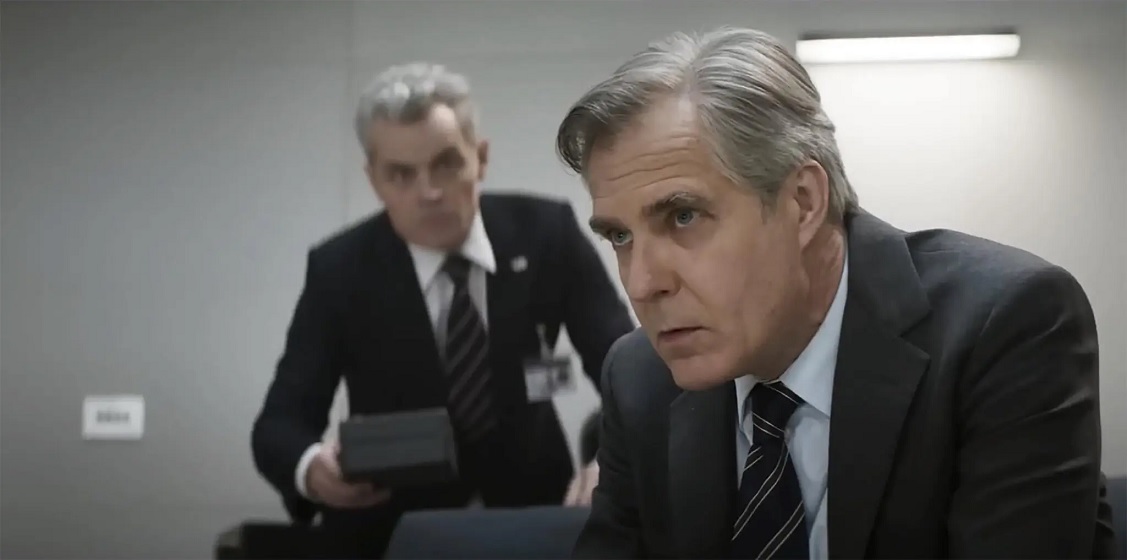
“Mission: Impossible” is a franchise known for its big-budget, death-defying stunts, but sometimes there’s nothing more suspenseful than a good old-fashioned, face-to-face staredown.That’s what the actor Henry Czerny brought to the first film in the series, released in 1996. As the officious Kittridge, director of the Impossible Mission Force, Czerny sneered at star Tom Cruise with such delicious condescension that their tetchy tête-à-tête in a Prague restaurant — shot at deliriously canted angles by the director Brian De Palma — became one of the film’s highlights.
Six films later, in the new “Mission: Impossible — Dead Reckoning Part One,” Kittridge has returned to sneer and spar some more with Cruise’s superagent, Ethan Hunt. Christopher McQuarrie, who directed the last three movies in the franchise, said he had long intended to have Czerny return to the fold.
“Henry’s Kittridge is not a villain,” McQuarrie wrote in an email. “He’s not even an antagonist. He’s a worthy adversary, walking the line between a guy we love to hate and want to like. He’s a bastard, but he’s a bastard we want on our side.”
When the 64-year-old Czerny boarded the new film, he was surprised at how fluid the production was: McQuarrie and Cruise knew the action set pieces they wanted to include, but the scenes stitching them together were still up for grabs. Much of the exposition that would set up those sequences eventually fell to Czerny, who can deliver stakes-setting information with musical grace.
If that’s the distinctive flavor that Czerny can provide, he’s happy to deliver it. “I binged on ‘The Bear’ last night,” Czerny said during a video call last week, “and this image of ‘Mission: Impossible’ keeps coming up as a beautiful French dish, in that everything has been reduced so the flavor is profoundly intricate, unique, separate.”
Here are edited excerpts from our conversation, held before SAG-AFTRA went on strike.
Chris McQuarrie has said that ever since he took over directing duties on this franchise, he’s been looking for the right time to bring you back. Were you aware you were under consideration?
I had no idea. As a matter of fact, when I got the call, it was 25 years almost to the day when Brian De Palma and Tom decided I was going to be their Kittridge. In January 2020, McQ wanted to talk to me about bringing Kittridge back. I thought it was a little bit of a joke, and he said, “No, seriously.” So I spoke to him the next day and he said, “We’re not sure what we’re doing with the script yet.” I thought, “Yeah, you’ve got a script in the bottom drawer somewhere. Come on, you’re just not telling me what you want to do with the guy.” But the script is very fluid.
What did they tell you about why they brought you back?
I think he was brought in as a burr that we remember in Ethan’s shoe. The original idea was that he represented the bureaucracy — the C.E.O. or whatever — that doesn’t like the asset to be human. So with Ethan, he’s the world’s asset. And the American people who Kittridge, to a certain extent, believes he represents, they’re his shareholders. He doesn’t like that there’s one person they’re beholden to. However, who else are you going to call?
How has he changed since we saw him in the first film?
I asked McQ, “OK, what do you think he’s been doing for 25 years?” It wasn’t really bothersome to McQ that there wasn’t an answer for that, and I was somewhat taken aback. At the same time, McQ has such a wide focus, and those particulars are allowed to be brought to the screen by the actor: “You do your homework, you let me know and we’ll sort it out, and we’ll actually do several versions of what you think he’s been doing.”
So before I arrived in London for my fitting on a film that really had no script at the time, we had an idea of what we were going to do. I figured Kittridge got schooled by Ethan 25 years ago, so he figured, “OK, I’m going to work in all the other agencies in Washington because I don’t like being schooled by somebody who’s younger than me.” So I think he’s worked everywhere he could at as high a level as he could, and came back to run the Impossible Mission Force a great deal more edified. He has a sadder but wiser knowledge of how the American intelligence machine works and who it’s working for.
How did things evolve with the character?
McQ has a process that can be really intimidating for actors who haven’t done this before. What I’m used to after working on a show [he has appeared in several series, including “Revenge”] for a few years is you’ve got two takes, maybe, because we’ve got 12 pages to do today. You’ve got to pick a couple of things and we’ve got to move on. But with McQ, something will come out based on what you’ve packed and he’ll start adjusting it. He’ll allow you to go in a certain direction. And then you’ll go back and reshoot it if you want.
So what he was after, we realized, was this kind of older-brother thing going on between them. Kittridge is clearly trying to keep Ethan in line, doesn’t want to let him have all the marbles, but there’s a profound respect for him as well. And McQ was allowing those flavors to show up in plenty of takes so that when he got into the editing room, he can hone the scene and it’ll have those flavors distilled.
What do you think makes your face-offs with Tom so delicious?
When you’re working with Tom, there’s a focus that’s available to you, and you can disappear. You just can open the tap and see what comes out. Kittridge and Ethan obviously are coming at the issue from different sides. Kittridge believes that he’s operating on behalf of his shareholders, as is Ethan. But Kittridge’s personal investment in success is deeper than Ethan’s: Ethan’s idea of success is that we all are better off, Kittridge’s idea of success is that we are better off.
You seem to take such delight in his lines.
Oh God, right? Like, why wouldn’t you? It’s luscious stuff. I started with classical theater, and it’s rare that you get to say some of the stuff Kittridge gets to say in a genre film. Some of the stuff is beautifully written. And there’s a cadence that comes out that apparently is somewhat unique to Henry Czerny, I found out.
Over the course of your career, you’ve played your fair share of exposition-delivering characters. How do you make those lines juicy?
By finding the absolute elemental flavors in the intent. What am I trying to convey? What are the stakes if I don’t convey it? And what am I going to do to convey it clearly and as quickly or as profoundly as I can? And that creates the cadence.
A perfect example of that is your centerpiece scene from the first “Mission: Impossible.”
I will tell you, and Tom will corroborate me on this, some of these scenes show up a day or two before, so you don’t have a lot of time to go over it 200 times and have it be part of your system in a way that you would like. But with that scene, there wasn’t a word change at all. I don’t know why, but that day, De Palma was very on me about commas and periods: “No paraphrasing here.”
Are you good at pretending that the camera’s not there when it’s as close as De Palma likes to put it?
I wasn’t so much then, but I am now. That’s why the scenes are so interesting, I think, between Ethan and Kittridge: There is an intimacy there that I try and maintain.
In the new film, your very presence in a scene seemed to make the camera angles more dramatic.
Oh, yes. Vanessa [Kirby] and I shot the train scene, and then we shot the scene between Ethan and Kittridge — a reshoot, because they’d added a character. We went and shot some of it, and they were shooting from the De Palma angles, we’ll call them. Then they looked at each other and thought, we’ve got to go back and reshoot the train scene.
Really? They reshot the whole train scene with more canted angles?
It worked thematically. The intent begot the form. It wasn’t an add-on, it was, “Oh, that’s right. Let’s go back and do that.” That’s the way they put these things together.
What do you remember about being cast in the first “Mission: Impossible”?
I didn’t want to do it at first. I was in Brazil and I was not in a good frame of mind, I didn’t speak the language, I hadn’t slept in weeks, and we were shooting nights [on a Brazilian film] — it was a disaster. I got a call from my rep, saying, “Brian and Tom want you to do their Kittridge.” I said, “I don’t think I can do it.” He said, “Henry, you’re doing it. I don’t know what the hell you’re thinking, but in three weeks’ time, you’re going to be back here and you’re going to be doing that.”
OK, fine. I went to the C.I.A. for a couple of days and I chatted with the people. I thought, “How does this work? They’re not going to tell me everything, but I want to have some juice in there.” When I went to do rehearsal for “Mission,” the first one, I had all these ideas: “You know, what actually happens is blah, blah, blah.” Brian said, “Good to know, but we’re not doing a documentary.” However, that research helped ground the character a little more for me. After the first film, did you expect to continue with the franchise?
Oh, there’s a story there. At the end of it, I thought I would have a lunch with [producer] Paula Wagner because I was optioned for the second one. We discussed what Kittridge could have been doing in the first one, what I think you should be doing in the second one. Paula Wagner listened very politely, paid for the lunch, and that’s the last I heard from her. I burned the bridge with all these notions of what Kittridge should be doing. It was my highfalutin idea about what I had to offer Hollywood after only my second film there.
It must be very full circle to come back to this franchise with a director who’s actually welcoming every thought you’ve got about the character.
Who would have thunk it? Be patient, keep honest. Lo and behold, really cool stuff will show up.
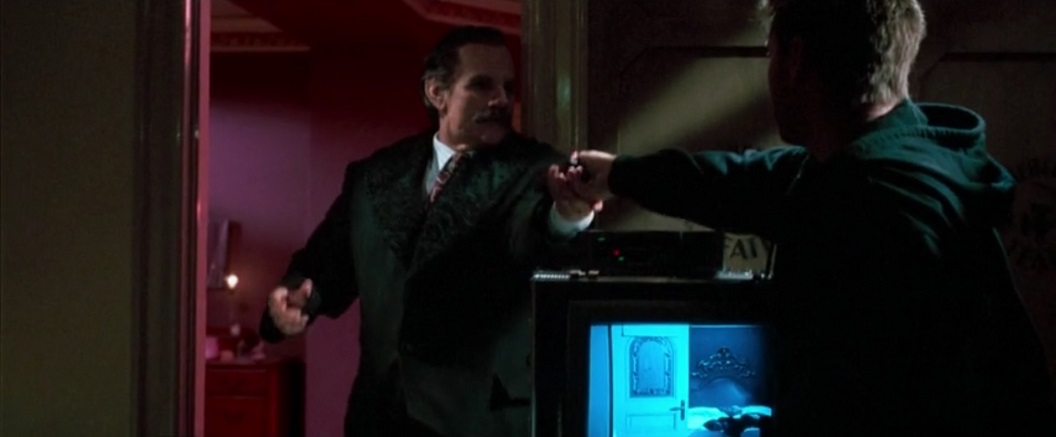
In the very first scene of the very first Mission: Impossible film, Ethan Hunt (Tom Cruise) is interrogating a Russian guy. We don’t know it’s Hunt, though, because — in perhaps the most iconic running bit in the M:I universe — he’s wearing an extremely lifelike rubber mask. Two minutes into the scene, he walks over to the Russian, drugs him till he passes out, and then pulls off the mask, dramatically revealing the face of a slightly flushed and rumpled Cruise. (It’s hot under all that latex.)Shortly after that first reveal, the walls of the room fall outward into a warehouse, which makes for a bigger reveal: The whole scene was faked. Not only was the now-immobilized Russian hoodwinked, but the audience was tricked into believing their senses. For us, the moment is delightful; for the laid-out man, not so much.
That opening parry for Mission: Impossible, created and produced by Cruise as a spy-action franchise for himself, showed up in movie theaters in May 1996, with Brian De Palma (of Carrie and Scarface) in the director’s chair. Compared to the latest installment in the franchise, frequent Cruise collaborator Christopher McQuarrie’s Mission: Impossible — Dead Reckoning Part One, the 1996 version is much sweatier, darker, and kind of erotic. (A Brian De Palma movie indeed.)
The omnipresent unmaskings, of which there have been at least 15 or 20 by now, are still a mainstay of the films. What’s so great about those reveals, in particular, is that you’re rarely actually expecting them. Dead Reckoning Part One plays with this a little, but for the most part, through all the films, any guy at any time could rip his face off and you’d still be like, “Wow, I did not see that coming.”
The new version is like its predecessors, employing a trope borrowed from the TV show that spawned the film: trickery around every corner, a sense that you can’t quite believe what you see. Dead people turn out to be not-dead people. Walls of rooms keep falling apart to reveal they’re constructed in some warehouse somewhere. Everyone could be a rogue agent or maybe not, and the movie sure isn’t going to wink at you about it till it’s good and ready.
That those twists and turns keep surprising us seven movies in points to what’s truly delightful about the Mission: Impossible franchise, and what makes it, in my opinion, both the most inventive and the most satisfying long-running franchise in Hollywood. On one level, M:I is wonderful because the convoluted plots are pretty much beside the point; if they can be said to have a consistent theme, it is “Tom Cruise likes almost dying on camera.”
And yet once you’ve watched them all, you can detect a kind of meta-theme to the M:I movies. It stems from a simple moviegoing fact: Most of us believe that what we are seeing in a movie is how things actually happened in the world of the movie. It’s why a movie like A Beautiful Mind or Big Fish or The Irishman is so memorably affecting; we are trained to believe our narrators, and when it turns out that what we’ve been watching is not quite what actually happened, it’s thrilling. New meaning emerges from the mismatch.
Mission: Impossible plays on this expectation, though there’s no specific perspectival narrator. The thrill comes from occasionally discovering that what we’ve been watching is an elaborate fake-out. Sleight of hand is everywhere. Don’t trust your senses, Mission: Impossible exhorts us — they’re easily manipulated.
This is underlined, in another meta-heavy way, by what makes the films so distinctive: Cruise’s incredible, literally death-defying stunts, every film seeming to take them to a new level. He climbs up sheer rock walls, leaps across rooftops, fights cliffside, and hangs off the side of a flying Airbus A400M. Each time a new Mission: Impossible movie is released, it’s accompanied with marketing material that mainly leans on explaining that yes, Tom Cruise did actually climb the Burj Khalifa. Personally I, and I suspect Cruise, will not be satisfied until Ethan Hunt is in outer space. (Oh, he’s doing it.)
Why emphasize that he’s actually doing these stunts (albeit with cables and nets — you could never afford to insure the production otherwise) as the lynchpin of the M:I marketing? First, of course, because it is pretty badass. But the second reason is obvious: While action is a mainstay of American cinema, particularly in superhero movies, we all know they’re flying around on soundstages and are CGI’d within an inch of their lives. It’s all spectacle, but with no reality.
With Mission: Impossible, however, our deceiving eyes don’t quite extend to the stunts. Yes, there are tricks of the camera and computer going on. But Tom Cruise is actually driving a motorcycle off a cliff and then plummeting down. That’s real — real enough to gasp and hold your breath and get a little shaky. It’s as much a mainstay of the movie as the mask trickery, and that subtle play with what we’re seeing, with the real and the unreal, suggests the movies might be doing this very much on purpose.

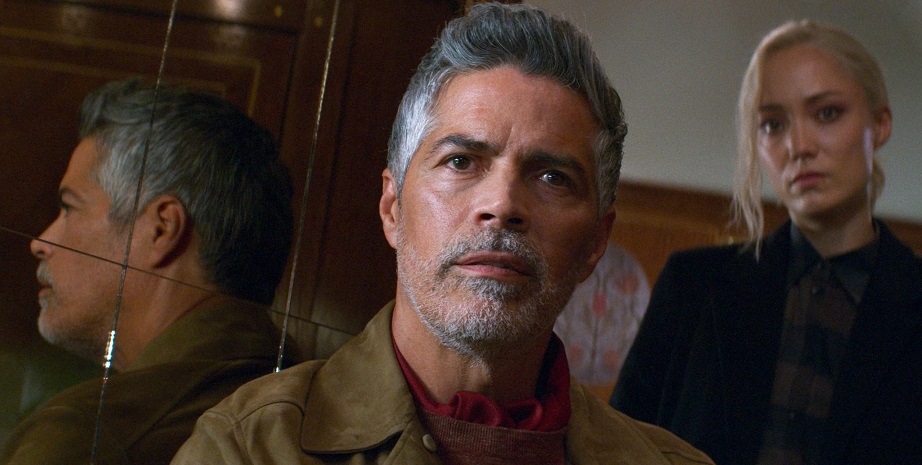
Now let's bounce back up to the first two paragraphs of Durr's review:
The Mission: Impossible intellectual property has existed for the better part of 50 years dating back to the original 1966 American espionage television series. A procession of films starting with Brian De Palma's 1996 delineation of the source material enkindled a strong following of action thrill-ride enthusiasts, each awaiting the latest death-defying feat from the ageless wonder himself, Tom Cruise. With each subsequent film, the series has shifted away from De Palma's trademarked directorial techniques such as point-of-view perspectives, split-diopter shots, and cross-cutting to manufacture enough rising tension in the edit. The core fundamentals of the spy espionage sub-genre have largely taken a backseat since then, instead relying on spectacle as the main selling point. Mission: Impossible - Dead Reckoning Part One comes full circle with the series' roots, however, recapturing that classic De Palma tension while upping the ante with a few truly inspiring action set pieces.Atoning for the failures of the past and reconciling with the repercussions are the central themes of this newest rendition. As the film's cinematic qualities are heavily influenced by the past, so is the narrative, attempting to interweave pieces of Ethan Hunt's tempestuous history with a threat that portends the well-being of his fellow Impossible Mission Force crewmates. Dead Reckoning also feels timely, centering the film around a sentient artificial intelligence whose ability to infiltrate secure databases and control information spawns a global race for control. Artificial intelligence, the ability to process human intelligence through technology, has dictated the conversation as we implement various AI-generated applications into our daily lives. As advancements in computer sciences grow, artificial neural networks augment in complexities, making artificial intelligence a useful, but dangerous tool.
Newer | Latest | Older